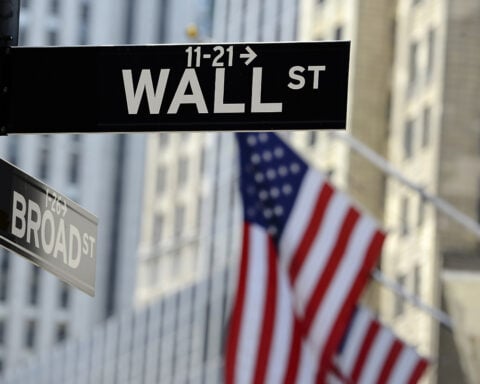U.S. stock markets remained firm on Tuesday, recovering from losses fueled by global economic concerns, including a significant plunge in Hong Kong’s stock market. This stabilization was largely supported by falling oil prices, which relieved some of the pressure that had been mounting on Wall Street.
By midday, the S&P 500 rose 0.7%, recovering most of the ground lost the previous day. The Dow Jones Industrial Average edged up 33 points (0.1%), while the tech-heavy Nasdaq Composite climbed 1.1%. These gains reflected a resilient market in the face of global turbulence, as investors in the U.S. maintained their positions despite unsettling news from abroad.
The global shock originated in Asia, where Hong Kong’s Hang Seng index plummeted by 9.4%—marking its worst day since the global financial crisis of 2008. This sudden drop was triggered by disappointment over China’s limited economic stimulus. Earlier, optimism had surged regarding potential support for the world’s second-largest economy, but as the Chinese government refrained from introducing significant spending measures, investor sentiment turned sour.
The sell-off in Hong Kong reverberated throughout global markets, affecting companies with substantial exposure to China. In the U.S., luxury goods maker Estee Lauder saw its stock fall by 3.5%, while casino operator Wynn Resorts dropped by 2.7%. European markets and other sectors dependent on Chinese business also felt the impact.
Despite these international concerns, Wall Street found some relief as oil prices sharply declined. Brent crude, the international oil benchmark, fell 4.5% to $77.28 per barrel, while U.S. crude dropped 4.7% to $73.53. Recent increases in crude oil prices, spurred by tensions in the Middle East, had led to fears of supply disruptions. The reduction in oil prices helped ease those concerns, allowing U.S. markets to stabilize.
Additionally, pressure from the bond market, which had been weighing on stocks, began to level off. Treasury yields, which had surged in recent days, held steady. The 10-year Treasury yield stood at 4.03%, while the 2-year yield, which closely tracks expectations for the Federal Reserve’s interest rate decisions, inched down to 3.97%. Higher Treasury yields typically reduce investor appetite for riskier assets like stocks, as they make bonds a more attractive option.
Recent reports showing stronger-than-expected U.S. economic performance also influenced market behavior. Data indicating robust hiring by U.S. employers last week raised hopes that the economy could avoid a recession. However, the same reports tempered expectations for aggressive interest rate cuts by the Federal Reserve. Investors are now largely betting on a modest quarter-point rate cut at the Fed’s next meeting, rather than the larger half-point reduction that had previously been anticipated.
Meanwhile, corporate activity contributed to mixed results on Wall Street. PepsiCo’s stock rose 1.3% after the company posted better-than-expected profits for the latest quarter. However, its revenue growth outlook was revised downward, as U.S. consumers have reduced their spending on snacks and drinks following several years of price hikes.
DocuSign saw a significant surge, jumping 8.1% after being announced as the newest member of the S&P MidCap 400 index. This development followed the decision by S&P Dow Jones Indices to include the electronic document signing company, replacing MDU Resources, which will be moved to the S&P SmallCap 600.
Conversely, oil and gas companies took a hit as oil prices pulled back. Chevron, one of the largest energy companies in the U.S., saw its stock fall by 2%, becoming one of the biggest laggards on the Dow Jones Industrial Average.
While Wall Street stabilized, China’s markets continued to experience volatility. Mainland Chinese stocks, which had been closed for a national holiday, reopened on Tuesday. In Shanghai, stocks rose 4.6% in a delayed response to the prior optimism about government stimulus. However, this rebound did little to quell investor concerns, as the dramatic 9.4% drop in Hong Kong loomed over global markets.
The combination of shifting oil prices, fluctuating bond yields, and mixed economic data underscores the uncertainty that continues to define global financial markets. As U.S. investors watch developments in China closely, Wall Street’s ability to hold firm reflects cautious optimism in an otherwise volatile environment.







